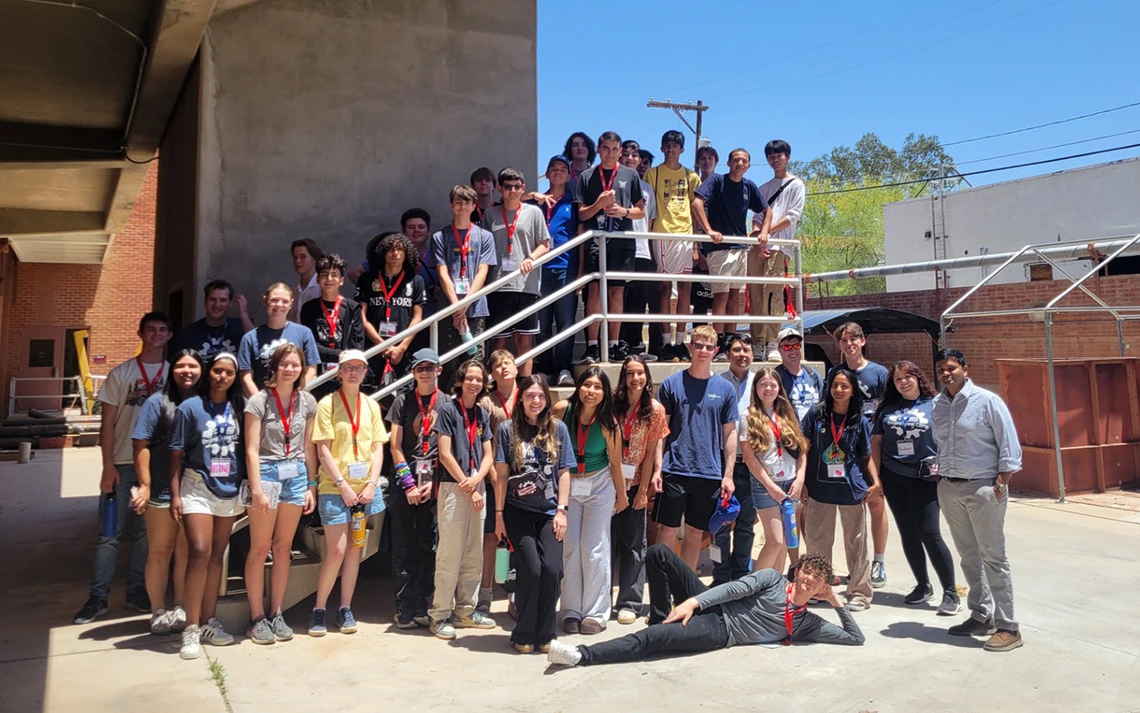High schoolers explore thermal imaging at Summer Engineering Academy

Summer Engineering Academy students find career opportunities and learn thermal imaging applications with CAEM’s Liang Zhang and Tejo Bheemasetti.
The college’s 2025 Arizona Summer Engineering Academy gave about 130 middle schoolers and 300 ninth- to 12th-graders and recent high school graduates a real-life understanding of engineering fields in high demand, such as mining operations, hypersonic vehicles and semiconductor manufacturing.
“This camp lets me explore all types of engineering, which is super cool,” said Josh Rabenou, who attended the Semiconductor Design, Fabrication and Application day camp.
On June 12, assistant professors of CAEM Liang Zhang and Tejo Bheemasetti co-hosted a half-day event, “Engineering Our Energy and Water: Day Camp,” which examined the interactions between temperature, soil, rock, water and infrastructure. High schoolers experienced real-world applications of civil and architectural engineering through hands-on demonstrations of geotechnical systems and built environment exploration.
Zhang hosted a presentation, "Seeing Radiation: A Thermal Camera Exploration of Buildings and Comfort," that showed students how thermal imaging can detect heat flow in buildings. Temperature flow impacts comfort and costs for occupants.
In Arizona, understanding how buildings retain or lose heat is crucial. Summer temperatures often climb above 100 degrees, and rooftop surfaces can reach between 140 and 160 degrees, creating high energy costs for homeowners.
Certain building materials, like concrete, absorb heat slowly during the day and release it at night, keeping nighttime temperatures elevated – sometimes up to 10-14 degrees higher than surrounding rural areas. These conditions make controlling heat flow vital for energy efficiency, comfort and safety.
Campers learned to detect thermal bridges, which show where heat flows more easily due to a break or weakness in insulation. Engineers target these weak spots to improve energy efficiency, Zhang said.
“Students also explored how plants and vegetation can improve thermal comfort and reduce heat around buildings, gaining insight into sustainable design and civil engineering in real-world contexts."
Introducing fast-growing tech careers
Now in its 20th year, SEA’s expanded hands-on programs for high school students include five camps spanning four days and two weeklong residential camps. Additionally, Cummings Aerospace sponsored a five-day camp that immersed middle schoolers in 3D-design and printing, coding and robotics.
Cori Dennis, SEA director and coordinator of high school outreach and summer programs, said the college expanded the academy’s June and July offerings to tailor experiences to regional economic trends and accommodate rising attendance, like the middle school camp, which grew by 30% from 2024 to 2025.
“That enabled departments within the College of Engineering to be more specific on what they were teaching the campers,” said Dennis, adding that the program is grateful for additional longtime supporters Bosch, Caterpillar, Intel and the U of A Applied Research Corp.
